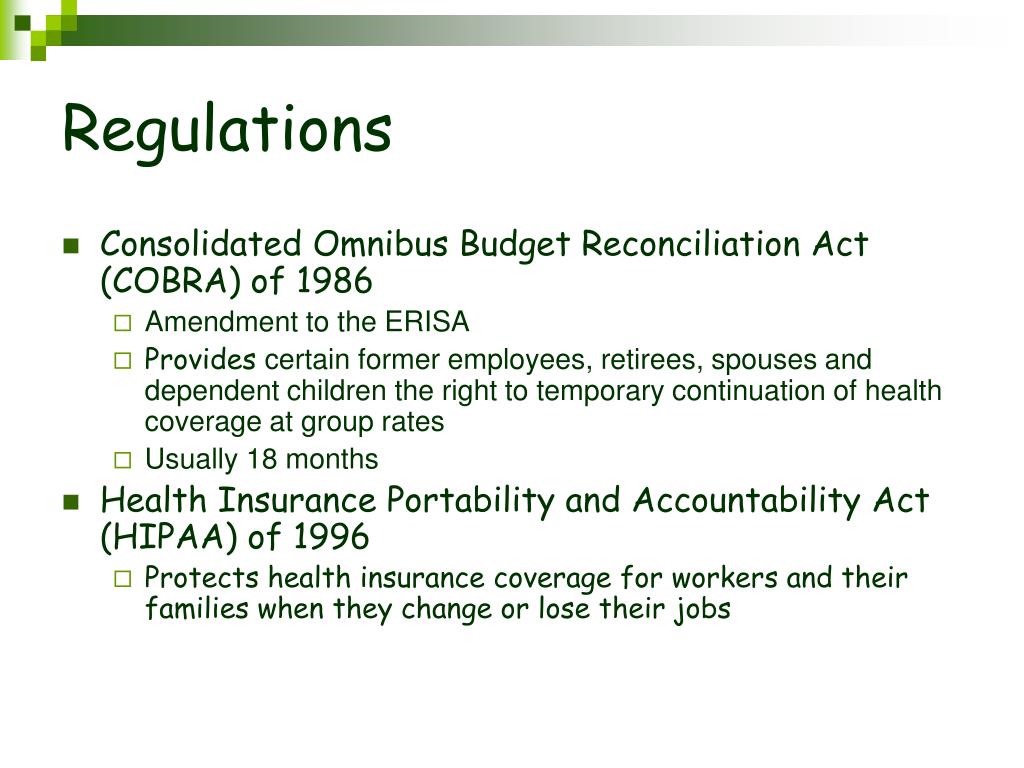
At the same time, these findings suggest that more needs to be done to improve process quality. The evaluation of the effects of these interventions demonstrates significant improvements in the quality of care provided to residents. The OBRA reforms and introduction of the RAI constituted an unprecedented implementation of comprehensive geriatric assessment in Medicare- and Medicaid-certified nursing homes.
#Omnibus budget reconciliation act skin
Other practices, such as use of antipsychotic drugs, behavior management programs, preventive skin care, and provision of therapies were unaffected, or the differences were not statistically significant, after adjusting for changes in resident case-mix. These results were sustained after controlling for differences in the resident characteristics between 19. There were also increases in good care practices, such as the presence of advanced directives, participation in activities, and use of toileting programs for residents with bowel incontinence. 001)) and indwelling urinary catheters (9.8 to 7% (P <. In addition, several problematic care practices declined during this period, including use of physical restraints (37.4 to 28.1% (P <. The accuracy of information in residents' medical records increased substantially, as did the comprehensiveness of care plans. Overall, the process of care in nursing homes improved in several important areas.
#Omnibus budget reconciliation act software
The data were analyzed using contingency tables and logistic regression and a special statistical software (SUDAAN) to assure proper variance estimation. The effect of being a member of the 1990 pre-OBRA or the 1993 post-OBRA cohort was assessed on the accuracy of information in the residents' medical records, the comprehensiveness of care plans, and on other key aspects of process quality while controlling for any changes in resident case-mix. The RNs collected data on the characteristics of the sampled residents, on the care they received, and on facility practices. MEASUREMENTS AND ANALYSES: Research nurses spent an average of 4 days per facility in each data collection round, assessing a sample of residents, collecting data through interviews with and observations of residents, interviews with multiple shifts of direct staff caregivers for the sampled residents, and review of medical records, including physician's orders, treatment and care plans, nursing progress notes, and medication records. OBRA provisions went into effect in federal law on October 1, 1990, although delays issuing the regulations led to actual implementation of the RAI during the Spring of 1991. One of the key provisions, used to help implement the OBRA requirements in daily nursing home practice, was the mandatory use of a standardized, comprehensive system, known as the RAI, to assist in assessment and care planning. OBRA-87 enhanced the regulation of nursing homes and included new requirements on quality of care, resident assessment, care planning, and the use of neuroleptic drugs and physical restraints. Two independent cohorts (n > 2000) of residents in a random sample of 254 nursing facilities located in metropolitan statistical areas in 10 states. The reality of OBRA 1987 and its intent of bringing a measure of quality assurance to the nursing home industry should only serve as an impetus for the nursing community to better translate the nurse role and its contribution in the nursing home setting to policy makers at local, state, and federal levels.To characterize changes in key aspects of process quality received by nursing home residents before and after the implementation of the national nursing home Resident Assessment Instrument (RAI) and other aspects of the Omnibus Budget Reconciliation Act (OBRA) nursing home reforms.Ī quasi-experimental study using a complex, multistage probability-based sample design, with data collected before (1990) and after (1993) implementation of the RAI and other OBRA provisions.


Without appropriate implementation, some of the provisions increase the liability of the nurse and the risk to the public. The primary implications of the these requirements center on the responsibility of the individual nurse or nurse community in ensuring appropriate implementation of the new requirement. Within that provision there are four specified requirements: (1) nurse aide training for 75 hours, (2) competency evaluation of newly trained nurse aides, (3) competency evaluation of nurse aides already providing care, and (4) a registry for nurse aides. One major provision was for nurse aide training. The Omnibus Reconciliation Act of 1987 set forth new provisions for Medicare and Medicaid sections related to new standards for care in the nursing home setting.


 0 kommentar(er)
0 kommentar(er)
